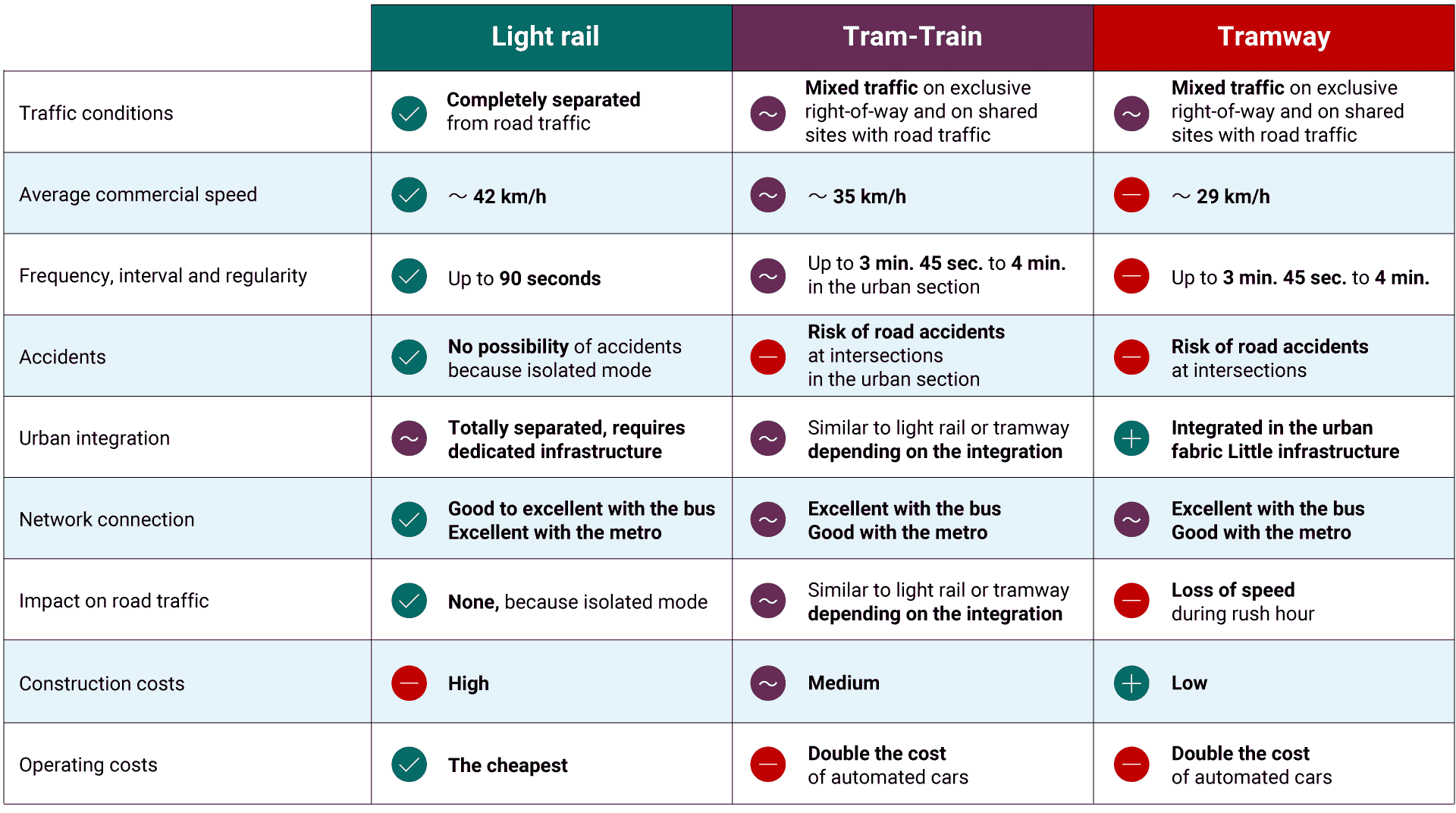The different modes of transport studied for the Eastern REM
Before determining that light rail would be the best mode of transportation for the REM de l’Est, other types of rail transportation were compared and analyzed. Here are the different modes considered, as well as the characteristics that helped determine the best choice of mode for the project.
Note. In order to make the comparison fair, all modes were studied according to similar integration types. The tramway and the tram-train, which are traditionally integrated at ground level, were therefore considered underground on the northern section in order to be similar to the light rail and not penalize them unduly.
Some important criteria to consider when choosing a mode of transportation:
- Achievable commercial speed for the mode
- Departure frequency
- Estimated ridership to validate that the solution’s capacity meets the territory’s mobility needs in the medium and long term
- Specific characteristics of each mode, such as technological aspects, resistance to Québec winters, etc.
Direct links to the different transportation modes analyzed :
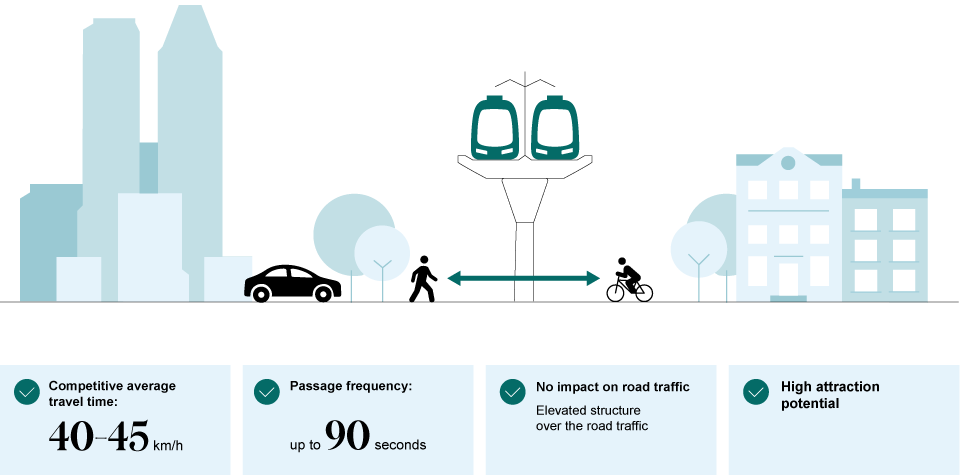
With its fully dedicated lanes, the light rail can run independently of road traffic, thus avoiding congestion. This aspect guarantees the safety, speed and reliability of the service. The system is controlled remotely from a control centre, allowing it to operate without a driver in the car.
Cars of this type, called “rolling stock,” are characterized as an electrically powered light rail system. Their life span is about 40 years.
Example of automated light rail systems throughout the world
(source : SYSTRA)
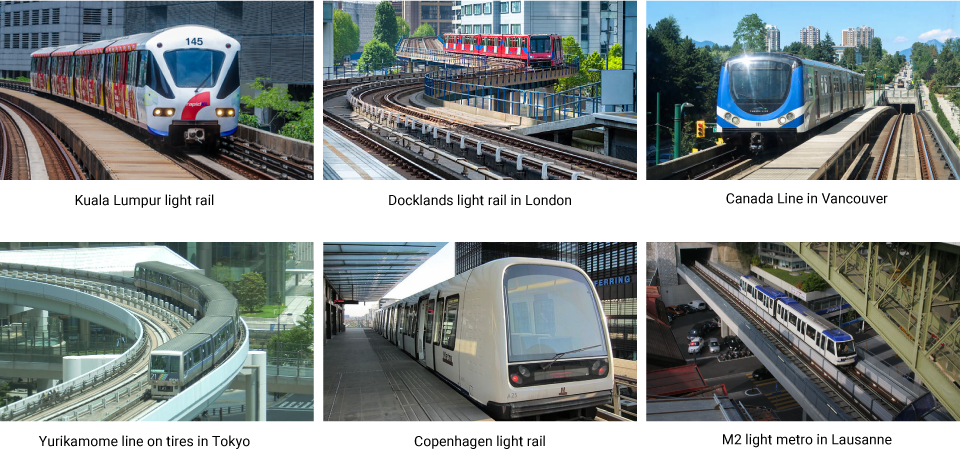
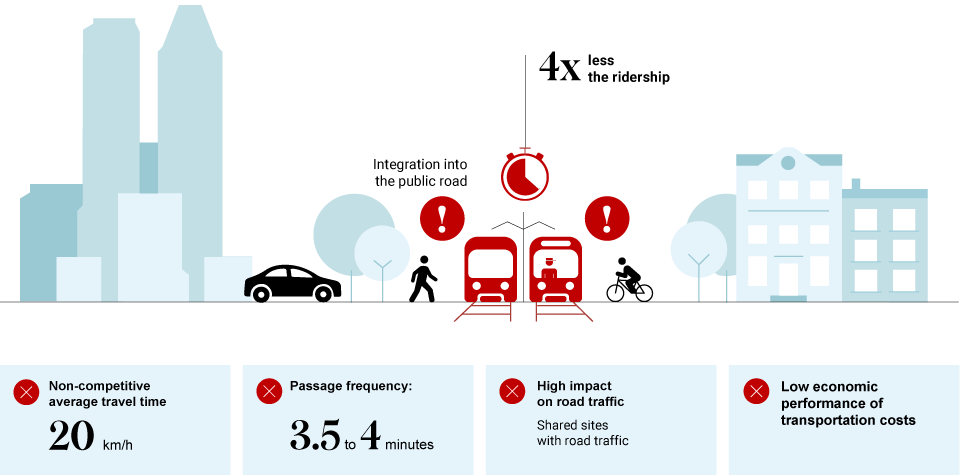
Basically, a tramway is a conventional rail system, which runs on rail tracks that are partially or fully integrated into the road right-of-way. The tramway runs in an urban environment and shares the road with road and public space users. A driver on board is responsible for operating the vehicle, adapting the speed and handling according to the conditions (intersections, obstacles on the track, traffic, etc.).
Road traffic has a strong impact on the tram, even though it runs on the side of the road, as it must still stop at traffic lights. In urban areas, tramways have difficulty reaching more than 26 km/h; their usual speed is about 20 km/h as they are also subject to road hazards (e.g. an accident) and traffic lights are frequent. Tram rolling stock has a life span of 25 to 30 years.
Example of tramways throughout the world
(source : SYSTRA)

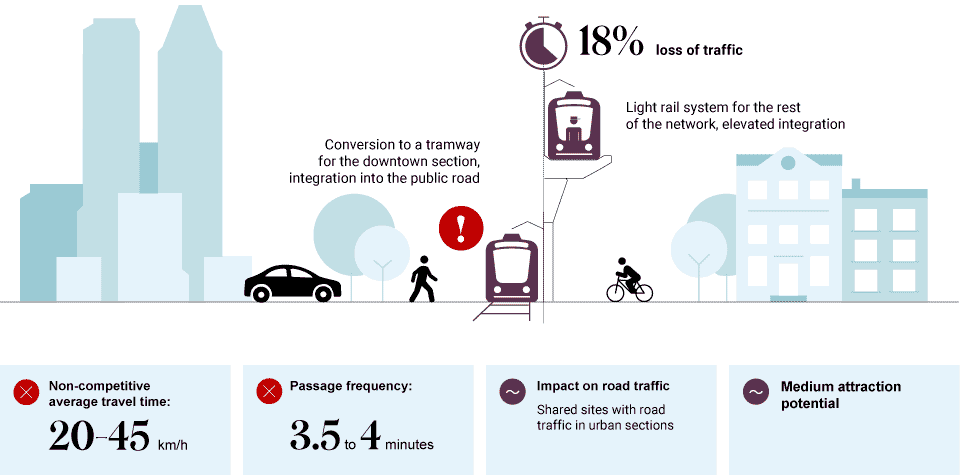
The tram-train is a tramway system that runs on ground-based rail infrastructure in urban areas and can run on a dedicated right-of-way in less dense areas. As its name illustrates, the tram-train is a hybrid mode, it very often uses existing railway rights-of-way where it can share the track with other trains. This mode requires a driver on board. Speeds vary according to the configuration, being faster on the rail part and slower on the tramway section.
The rolling stock of the tram-train is the same as that of the tramway, while being able to run on tramway tracks in an urban environment as well as on a separate right-of-way, on a bridge, underground or on the ground.
Example of tram-trains throughout the world
(source : SYSTRA)
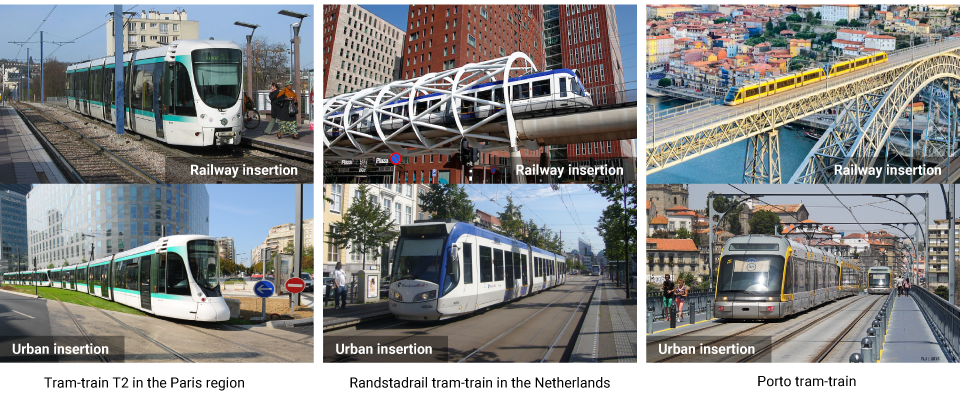
Comparison of the three modes of analysis for the REM de l’Est
The comparative table below takes into consideration the characteristics of the REM de l’Est route, the northern portion of which is partly underground. Thus, the tramway and the tram-train, which are traditionally integrated at ground level, were here considered underground on the northern section in order to benefit from the advantages of light rail.
Final choice: Light rail
The choice of mode was based on capacity, factors affecting attractiveness to potential travellers such as frequency, speed and reliability, and physical integration constraints.
-
Passenger capacity
Studies have shown that light rail is the option with the highest passenger capacity per hour, compared to tramway and tram-train. It can move four times more passengers than the other two options. In relation to the needs identified for the east and northeast, the tram-train and tramway options would not offer sufficient capacity and, as of the first years of operation, passengers would be left behind on the platforms.
-
Travel time
In the scenarios studied, light rail offers the most competitive and therefore attractive routes. The REM de l’Est is aimed at long-distance travel, so the travel time offered to future users is a fundamental component. In comparison, light rail would allow travel time of 25 minutes from Pointe-aux-Trembles, compared to 50 minutes by tram and 40 minutes by tram-train.
-
More frequent departures
The tramway and tram-train cannot go faster through downtown due to traffic constraints. Since the light rail system runs on dedicated tracks, it can increase trip frequency, especially during rush hour. This frequency is particularly important so as to offer an attractive, high-quality service that encourages people to leave their cars behind.
-
Preservation of the urban environment
Although the streetcar is the least visually intrusive mode, it is also the one that leads to the most significant reorganization of the sector (public spaces, public utility networks), due to the width of its integration corridor.
-
Construction and operating costs
Light rail is the most expensive to build, but the most economical to operate. From a long-term perspective, it differs from the tramway and the tram-train in terms of profitability.
In conclusion, considering the context of the city of Montréal, the two-branch route of the REM de l’Est to serve the east and northeast of the city, as well as the sensitivity and capacity simulations, we affirm that the light rail mode is the one best suited to the REM de l’Est project in the short, medium and long term.
Subscribe to our newsletter
We will keep you updated on all news and developments regarding CDPQ Infra and our projects.
- 30 -


